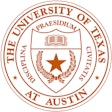![Jean K. Freeman Aquatic Center, University of Minnesota [Photo courtesy of Unison Comfort Technologies]](https://img.athleticbusiness.com/files/base/abmedia/all/image/2021/01/ab.air121_feat.png?auto=format%2Ccompress&q=70&w=400)
Mask-wearing and social distancing are the responsibility of individuals, but what can facility operators do to further mitigate the spread of coronavirus beyond enhanced cleaning protocols or complete shutdown? If affixing a filter to one's face is a last line of personal defense against an airborne virus, can anything be done to the indoor air itself?
The answer is yes, but the virus-fighting efficacy of any one air-handling tactic can be difficult to quantify. No real-time test exists to show before-and-after comparisons of an interior space in terms of COVID-19 existence and eradication.
"We're guessing," says Keith Coursin, president of commercial dehumidification manufacturer Desert Aire, who like many air-handling experts lists the introduction of outside air to the building envelope as step one in the process of improving indoor air quality. "Everybody's sitting there saying, 'We know more is better in the case of this particular virus because dilution is your solution.' Well, how much dilution? I don't know. There's some core research being done on just trying to estimate how much chloramines get released into pool air. We're still trying to figure that out."
Natatoriums have a leg up on other indoor athletics, fitness and recreation spaces in terms of their ventilation capabilities, but then chloramines haven't killed a third of a million Americans, as COVID-19 has. "It has certainly changed people's minds about ventilation air — not just in pool rooms, but in all sorts of structures," Coursin says. "People are realizing that if they skimped on their ventilation air, they have issues."

Four building blocks
Kris Howard, group president at air-filtration provider Madison Industries, lists four building blocks toward better air hygiene: ventilation, purification, filtration and humidity control.
"As it relates to COVID, we're really thinking about this from a 'How do these businesses reopen or stay open?' standpoint," Howard says. "It's what they're doing proactively to be able to talk to their local governments, but also what are they doing to make people feel comfortable enough to be able to come inside?"
Ventilation involves the movement of air through a space, with a common rate being six complete changeovers of air per hour. Introducing fresh air from the building exterior to that process, often with what's called a dedicated outside air system, dilutes any impurities that may exist indoors. Up to 100 percent fresh air is possible, though most HVAC systems aren't capable of handling that load, as outside air often must be conditioned in terms of its temperature and humidity before entering an interior space. Systems more commonly will handle 15 percent outdoor air, with some able to adjust to higher percentages as desired.
"In that indoor space, you're going to move the air at six air changes per hour or once every 10 minutes," says Gary Lochner, vice president of business development for Unison Comfort Technologies. "If the amount of fresh air is 25 percent, that's an air change and a half per hour. If you went up to 50 percent, it's three air changes per hour. As you increase the ventilation rate, you're going to turn over the air with fresh air three times an hour versus one and a half an hour, and now I'm exhausting that much more air from that space in the same amount of time. If you went from 25 to 50, you're getting rid of double the amount of air per hour, and replacing it with fresh air from outside."
Purification products — some utilizing ultraviolet light, some using special filtration media and others bipolar ionization — have gained increased visibility during the pandemic, each promising a means of actively killing airborne pathogens. Says Howard, "If there are things floating around in the air such as viruses and bacteria, you want to have active means for being able to clear those pathogens out of the airway — something that's actively looking to capture or inactivate those viruses."
Filtration likewise comes with options, with HEPA (high-efficiency particulate air) filtration considered the gold standard, and the choice of hospitals. It can be incorporated within the HVAC system or in portable units serving smaller individual spaces, but the larger building system must be capable of handling such a filter. "If you have a system that's expecting point-one inch of static pressure drop with a filter — and then you introduce something that's three times that — that can have an impact on the overall air-distribution capabilities," says Ralph Kittler, VP of sales for Dehumidified Air Solutions. "If your system doesn't have a little bit of extra capacity on the fan end of things, you could be slowing down the overall air distribution to the room."
For that reason, Kittler and others feel that filters with a minimum MERV 13 rating present an attractive alternative. "The viruses themselves, while small, don't necessarily float around on their own. They tend to attach themselves to something much bigger," Kittler says. "I've read that MERV 13 filters, which are a lower pressure drop and quite a bit cheaper than HEPA filters, could be as effective as HEPA filters because of that."
Finally, humidity control is important because dry and damp extremes can present breeding grounds for viruses, bacteria or mold. "You're really looking at this sweet spot of 40 to 60 percent relatively humidity, which candidly is a particular challenge in a lot of environments," Howard says. "If you get lots of occupants in there breathing on top of one another, if you get pools involved, if you have people who are in there sweating, you are going to start to increase the humidity just based on the occupants, irrespective of the outdoor air conditions. Actively managing that dehumidification, typically, is the other piece of it from a COVID-management perspective."
![[Photos courtesy of Unison Comfort Technologies]](https://img.athleticbusiness.com/files/base/abmedia/all/image/2021/01/ab.air121b.png?auto=format%2Ccompress&fit=max&q=70&w=400) [Photos courtesy of Unison Comfort Technologies]
[Photos courtesy of Unison Comfort Technologies]
Investing in health
Enhanced air-handling does increase up-front and ongoing expenses, but as the pandemic continues, concern is less centered on cost than occupant heath and business operation, according to Coursin.
"People were trying to watch their pocketbook. Now, all of a sudden, they're saying, 'That's truly secondary. I've got to have the safety of my occupants in mind. What do I do?' Well, don't turn it off during the night. Flush the building," Coursin says. "This is what I hear from the USA Swimming people. If they can't teach people how to swim to prevent drowning, they're losing a big mission of the swim clubs. I think energy use becomes a secondary subplot."
That said, HVAC systems can include a variety of energy-recovery technology, usually in the form of an enthalpy wheel or a flat-plate heat-exchanger, to help mitigate operational costs. An enthalpy wheel can recover energy from both heat and humidity, while the flat-plate exchanger recovers only heat. "In the case of the enthalpy wheel, you're actually transferring the moisture from the airstream that you're exhausting to the incoming airstream," Lochner says. "That's in the winter. And then in the summer, you're actually extracting moisture from the incoming airstream and putting into the exhaust airstream, thereby not bringing in a bunch of moisture that you have to then take out."
In terms of initial investment, Coursin encourages those in the market for air-handling systems to upgrade to a product with adjustable ventilation. "I would say for most of the projects that have come up during this time period, the sales staff is going to recommend the full-purge capability," he says. "That's a reaction to what the engineers and customers are seeing. If it's built in, it honestly doesn't add very much cost."
And the investments can go on from there, as facility operators try to convince end-users that their indoor environments are safer as a result. "If people were to start using that kind of an approach and say, 'Hey, listen, we've got these filters in here, so anything in the air stream that's circulated through the HVAC system gets killed at the filter,' I think that's a huge step forward," Kittler says. "And then if you have some of these room-size air scrubbers and say, 'By the way, this machine here is rotating additionally, so in addition to the air that you're getting from the HVAC system, this is churning even more, and anything in that air is also getting killed.' With that, I think, people would be like, 'Yeah, you know what? Between the two of those, that's a pretty decent one-two punch. I'd start to feel more comfortable with that.'"
Because science still doesn't fully know what it doesn't know about this novel coronavirus, many of the strategies and methods employed to combat COVID-19 carry with them some amount of guesswork.
"I know there's going to be a demand for using these things, because people want them to work," says Lochner. "They really want something that's going to make this work, and so I'm sure you will see people willing to roll the dice on a manufacturer saying it works.
"We're talking about solutions. They seem to make sense. I think they're likely to help. It's just quantifying the help, right?"
All agree that improving air quality holds benefits beyond battling a once-in-a-century pandemic.
"There's actually an entire body of work around all of the good health outcomes that come from indoor air quality — your ability to focus, your long-term cognition, your ability to avoid respiratory disease over the course of your life," Howard says. "I think the other thing that's very practical, though, is you should think of this every cold and flu season, right? We have tens of thousands of people who die of the flu every year, and all of these same protocols could be put in place. If you really kind of zoom out and think about this, it's really an infection-management protocol that we should be thinking about over the long term — no different than washing your hands and washing surfaces. I don't think it's one and done. I wish it was once in a hundred years, but with the risk of contagion, especially when these things are airborne as we've seen here, it can be very deadly, very quickly."
Still, it may have taken this particular pandemic to infuse the air-quality discussion with unprecedented urgency.
"We have seen what dealing with this has done, and we're nowhere near out of the woods," Lochner says. "Are you going to want that to happen again with another pandemic, or are you going to be better prepared? And if you're building a building that needs to be able to handle something like that, well, my guess is the new construction projects that companies like mine get involved with are going to have COVID-mitigation equipment. And as people maybe can start to prove what's better or worse, maybe one of these technologies wins out, and when you build a new school or you build a new municipal building, you're going to have some version of COVID-mitigation as a standard component in your air-handling and your HVAC. I'm guessing that's going to be a thing. Who's going to want to take the risk that one, three, five, 10 years down the road, this repeats itself?"
Three things facility operators should do to improve air quality right nowMadison Industries group president Kris Howard recommends the following steps to immediately improve a facility's air quality at little or no cost: 1. Increase outdoor air ventilation as much as the existing HVAC system will allow 2. Upgrade all air filters to those with a MERV 13 rating and replace every 90 days. 3. Run all restroom exhaust fans constantly to create negative air pressure in those areas. "I see a lot of people looking for what's the one silver bullet that we can get to? That's where we come in and say, 'Here are some very practical things we can tell you to do from a ventilation perspective and a filtration perspective that are probably free or nearly free,'" Howard says. "And then, if it were my money, I would add a purification solution and a dehumidification solution on top of it, depending on what your individual building needs are. So it's not quite that pretty silver bullet — just do this one thing and all your problems will be solved — but it really is how you think about eating away at that risk where you have resident airborne transmission across your users inside of a given space." |
This article originally appeared in the January|February 2021 issue of Athletic Business with the title "Airborne disease brings urgency to air quality control." Athletic Business is a free magazine for professionals in the athletic, fitness and recreation industry. Click here to subscribe.





































